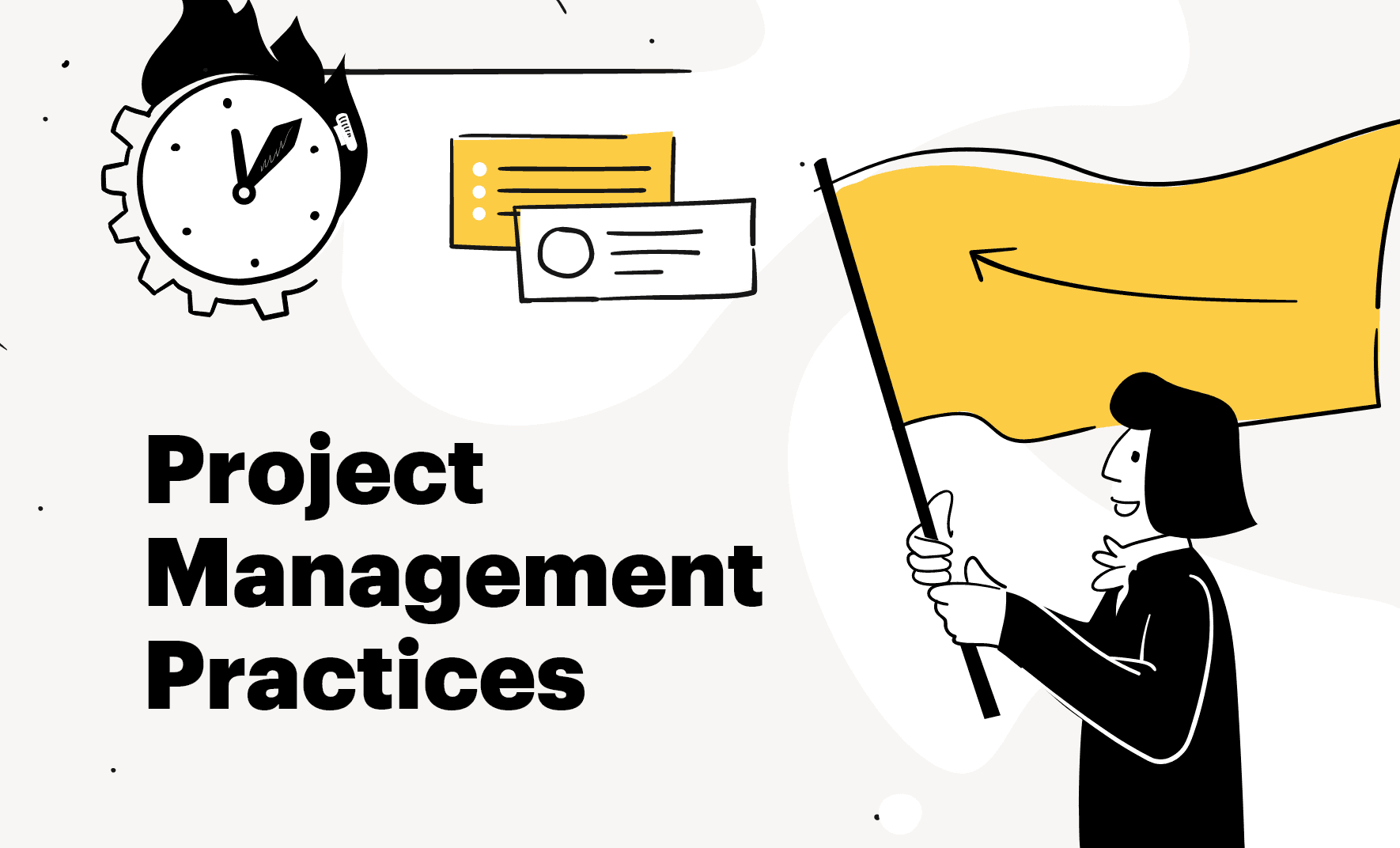Clients change requirements mid-way. Freelancers miss deadlines without warning. Projects balloon in scope while your inbox explodes with status updates. As work compounds, what began as a straightforward client engagement becomes a coordination nightmare that bleeds time, energy, and revenue. You start operating less like a business owner and more like a firefighter always reacting, never building.
There is a way out—but it doesn’t come from working longer hours or hiring more freelancers. It starts with a shift in how projects are structured, managed, and measured. Imagine replacing the chaos with clarity and the guesswork with control.
Structuring the Foundation
Breaking Down Complex Projects
Fragmenting a large project into executable components reduces ambiguity. It removes the psychological load of “figuring it out as we go” and replaces it with a blueprint that defines responsibilities, deadlines, and dependencies. A solopreneur must approach every new initiative with a predefined structure for segmentation milestones, task groups, and individual actions. Without this, chaos creeps in, communication fragments, and deliverables drift off-target.
The segmentation also enables targeted delegation. Every task must be tied to a specific outcome, with a clear path to how that outcome connects to the larger deliverable. Precision in scoping prevents overlaps, redundancy, and missed objectives. It builds internal clarity and external confidence.
Deciding What to Delegate
Delegation is not a tactical decision; it’s a strategic filtering mechanism. High-leverage solopreneurs never touch tasks that are easily outsourced unless they directly impact revenue or require deep domain control. Administrative tasks, production labor, and template-based execution immediately move off their plates.
The assessment starts with a simple test: Does this task move the business forward in a way that only I can? If not, it exits the personal workload. This philosophy forces prioritization and enables rapid scaling without operational fatigue. Projects stop becoming exhausting marathons and transform into orchestrated sprints.
Estimating with Confidence
Estimation without accountability is a gamble. Solopreneurs must convert uncertainty into frameworks. Each task receives a projected effort estimate that considers best-case, most-likely, and worst-case outcomes. Time buffers are not luxuries they are necessities to account for handovers, iteration cycles, and variable freelancer velocity.
Past project data must be used religiously. Over time, a solopreneur accumulates a mental database of task durations, bottlenecks, and risks. This becomes the benchmark against which all new timelines are measured. Relying solely on freelancer estimates without challenge creates blind spots that cost time and money.
Selecting and Onboarding the Right Talent
Choosing the Right Freelancer
Skill is only one filter. Reliability, responsiveness, and pattern recognition form the core criteria for freelancer selection. A solopreneur must assess not just who can execute the task, but who can sustain their output under pressure and ambiguity. Those who require over-explaining, clarification loops, or frequent nudges increase project management overhead and dilute ROI.
The best freelancers operate as mini-owners of their function. They ask critical questions. They seek clarity proactively. They don’t wait to be told they anticipate. These are the contributors worth investing in, onboarding deeply, and retaining long-term.
Onboarding Without Friction
Onboarding is where execution velocity is won or lost. Delays, misalignment, or over-dependence on real-time communication signals a broken onboarding pipeline. The onboarding process must be structured, repeatable, and asynchronous-ready. New freelancers receive one link a central resource hub containing briefs, references, SOPs, brand guidelines, tone of voice, and platform credentials.
Templates eliminate ramp-up confusion. Pre-built task cards, checklists, and annotated examples deliver clarity without supervision. This cuts onboarding time by 50% and reduces error rates dramatically. Onboarding isn’t a touchpoint—it’s a transfer of operational clarity.
Creating Clarity and Accountability
Documenting Workflows and Expectations
Unwritten processes become expensive mistakes. When freelancers change and tasks evolve, documentation preserves continuity. Every workflow, from creative revisions to development deployment, must live in a systemized format. This creates a shared understanding across rotating contributors.
Expectations must go beyond deadlines. Quality benchmarks, review criteria, preferred tools, and escalation paths must be crystal clear. Vague direction leads to fractured outputs. With proper documentation, freelancers stop guessing. They start producing.
Setting Communication Cadence
Silence kills momentum. Micromanagement kills trust. Solopreneurs strike the balance by defining explicit communication rhythms. Daily syncs are only necessary during time-sensitive launches. Weekly reports, shared dashboards, and milestone-based updates create predictable feedback loops without interrupting execution.
Clear channels beat chaotic chats. Each communication tool should have a defined purpose: tasks go in one space, discussions in another, files in another. This reduces noise, centralizes reference points, and ensures no instruction gets buried in clutter.
Tracking Progress Without Micromanaging
Micromanagement signals weak systems. Solopreneurs must build dashboards that provide immediate status visibility. Kanban boards, Gantt charts, or progress meters shift focus from activity to outcomes. Instead of asking “What’s the update?”, the system shows what’s done, what’s pending, and what’s stuck.
Every freelancer must self-update progress. This single discipline enforces accountability without needing direct oversight. The solopreneur reviews, not chases. The manager role becomes supervisory, not operational.
Managing Collaboration and Dependencies
Ensuring Quality Across Freelancers
Quality fails when instructions are subjective. Solopreneurs eliminate this by systematizing how quality is defined. Sample outputs, annotated deliverables, and success checklists define quality in tangible terms. No freelancer should ever ask, “Is this what you wanted?”
Cross-functional quality must remain consistent. When developers and designers collaborate, the output must feel cohesive. That cohesion emerges from a shared vocabulary of quality, documented and enforced by the solopreneur at every layer.
Coordinating Creative and Technical Contributors
Dependencies are project landmines. If the copy is late, the designer stalls. If the wireframe shifts, the developer reworks. Mapping dependencies at the start of every project exposes choke points early. Tasks must be ordered by logical prerequisites, not arbitrary availability.
The solopreneur becomes the synchronizer. Each contributor must know not just what they need to do, but who’s waiting on them. Clarity of sequencing prevents rework, builds respect across contributors, and keeps the engine moving.
Closing Feedback Loops
Feedback must be prompt, specific, and centralized. Slow feedback leads to stale tasks. Vague feedback leads to repeated corrections. A single source of truth one annotated version, one consolidated list of revisions ensures every contributor works off the same page.
Final outputs must be version-controlled. Feedback must close with confirmation. “Changes made” is not a finish line. “Changes confirmed” is. This discipline eliminates ambiguity and tightens the iteration loop.
Navigating Time, Scope, and Budget
Managing Scope Creep
Scope creep is a management failure. It doesn’t “happen”—it’s allowed. Solopreneurs prevent it by defining scope boundaries, freezing requirements post-kickoff, and requiring written approval for any expansion. Every change request has a cost. That cost must be tracked and approved before it’s actioned.
Scope creep also originates from poor initial scoping. Solopreneurs use structured discovery sessions and deep requirement gathering to lock the scope before the first task is assigned. Precision upfront pays off in project control later.
Working Across Time Zones
Time zone differences either create momentum or lag. Smart solopreneurs use time gaps as leverage. Tasks are passed forward, progress continues 24/7. This creates pipeline-style workflows where work is always moving.
However, asynchronous must not mean disconnected. Solopreneurs define time expectations e.g., “Respond within 12 hours,” or “Daily updates by 5 p.m. your time.” This sets the tempo and ensures the rhythm of work never drops.
Tracking Budget and Time
Budgets are tracked per freelancer, per task, per milestone. Flat fees, hourly rates, or performance-based incentives must be mapped to deliverables. Burn charts display how much has been spent vs. what’s been achieved. Red flags are identified early, not at project close.
Time tracking isn’t optional. Whether automated or manual, every task must log hours. These logs surface inefficiencies, enable better estimates for future work, and justify pricing decisions for clients.
Handling Freelancer Delays
Delays are project-killers. Every freelancer delay is a signal—a missed cue, a mismanaged priority, or a broken expectation. Solopreneurs build recovery protocols. Tasks get reassigned within 24 hours. Backup freelancers remain on standby for critical roles.
No project should rely on a single point of execution. Every high-impact task must have a continuity plan. A missed deadline doesn’t stall the project—it reroutes it.
Mitigating Risks and Ensuring Continuity
Building Accountability
Freelancers operate outside traditional HR systems. This means accountability must be engineered into the project itself. Deadlines tied to milestone payments, time-stamped instructions, and written confirmations create operational guardrails.
Solopreneurs enforce consequences. Repeated misses result in de-prioritization. Strong contributors rise to the top of the talent stack. Accountability becomes not just expected—but enforced.
Creating Contingency Plans
Backups are not optional—they’re core infrastructure. For every key role, there must be an alternate. These alternates receive minimal onboarding in advance. They’re looped in on updates. They’re ready.
Every project plan must include “What happens if X fails?” Contingency plans are built into the calendar and budget. This turns surprises into switchovers.
Managing Subcontracting
Unapproved subcontracting fractures quality control. Solopreneurs prohibit it unless vetted in advance. Every contributor must be the person doing the work—not outsourcing silently to others.
If subcontracting is allowed, it comes with process: vetting, accountability, and output reviews. Anything less risks deliverables, timelines, and client trust.
Keeping Clients Aligned
Aligning Client and Freelancer Outputs
Clients speak in outcomes. Freelancers speak in tasks. The solopreneur must translate. They turn vague directives into clear instructions. They reverse-engineer desired results into actionable briefs.
Misalignment isn’t miscommunication—it’s mismanagement. The solopreneur keeps both ends locked, syncing client expectations with execution details.
Integrating Client Communication
Clients don’t talk to freelancers. They talk to you. Solopreneurs filter, synthesize, and deliver client inputs in digestible formats. They eliminate noise and deliver structured feedback.
This preserves freelancer focus while enhancing client confidence. It’s a controlled relay—not a chaotic broadcast.
Maintaining Transparency
Transparency doesn’t mean oversharing. Solopreneurs deliver milestone reports, performance snapshots, and risk flags in pre-decided intervals. Clients never wonder what’s happening—they know.
When issues arise, solopreneurs lead with solutions. Transparency earns trust. Solutions preserve it.
Wrapping Up and Learning
Fostering Ownership
Freelancers treat work like tasks. Solopreneurs turn them into owners by involving them in decision-making, sharing context, and giving recognition. Ownership improves quality, reduces rework, and increases commitment.
Ownership isn’t a speech—it’s process integration. Those who feel seen, stay longer and perform better.
Running Effective Post-Mortems
Retrospectives are not optional. Each project ends with a post-mortem. What worked? What broke? What’s preventable? Insights are captured, synthesized, and translated into new systems.
Improvement comes from patterns. The solopreneur’s job is to spot and act on them—fast.
Measuring Project Success
Success is defined by outcomes, efficiency, and learning. Did the project meet goals? Was it profitable? Did it improve operations? Solopreneurs track success across multiple layers—output quality, team velocity, client satisfaction, and system growth.
Every completed project becomes a case study. Learn. Codify. Scale.
Conclusion
Project management best practices for solopreneurs are not just methods—they are survival strategies. With the right systems in place, solopreneurs stop drowning in task-switching and start leading with focus. They reduce friction, elevate quality, and reclaim control over outcomes.
It’s not about working harder. It’s about executing smarter.
That’s how one person builds the momentum of a team. That’s how businesses grow sustainably, without burning out the person running them.
Start simplifying project management today with Pinrom, available at just $1/user—finally, a tool that respects both your time and your budget.









